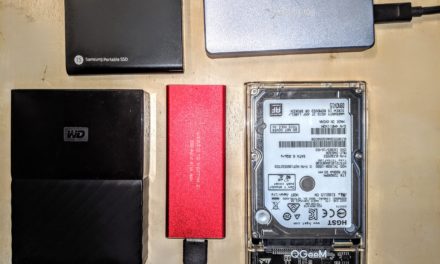Comparing the Titans: A Filesystem Showdown
Now, let’s see how these filesystems stack up against each other:
| Feature/Attribute | XFS | ZFS | Btrfs | ext4 | NTFS | APFS|
|---|---|---|---|---|---|---|
| Primary Use | Large files, high performance | Data integrity, large storage pools | Flexible management, snapshots | General use, widely supported | Windows environments | macOS environments |
| CoW (Copy-on-Write) | No | Yes | Yes | No | No | Yes |
| Snapshots | No | Yes | Yes | No (limited via LVM) | Yes (Volume Shadow Copy) | Yes |
| Subvolumes | No | Yes (datasets) | Yes | No | No | Yes (Space sharing) |
| Redundancy | Limited (with LVM/MDADM) | Advanced (RAID-Z) | Built-in (RAID 0, 1, 10) | Limited (with LVM/MDADM) | Limited (with Windows RAID) | Limited (no native RAID) |
| Data Integrity | Limited | Strong (checksums, CoW) | Good (checksums, CoW) | Limited | Limited | Good (checksums, CoW) |
| Compression | No | Yes | Yes | Yes (since Linux 4.9) | Yes (select versions) | Yes |
| Max File/Volume Size | 8 EB / 8 EB | 16 EB / 256 ZB | 16 EB / 16 EB | 16 TB / 1 EB | 16 TB / 256 TB | 8 EB / 8 EB |
| Block Size | 512 bytes to 64 KB | Dynamically sized (recordsize) | 4 KB to 64 KB | 1 KB to 4 KB | 512 bytes to 64 KB | 4096 bytes (fixed) |
| Ease of Use | Simple | Complex (more features) | Moderate | Simple | Simple | Simple |
Welcome to the digital age’s library – the filesystem. It’s the unsung hero that manages how your digital memories, professional documents, and entertainment collections are stored. But not all filesystems are created equal. Each has its own strengths, quirks, and ideal use cases. In this guide, we’ll explore the fascinating world of filesystems, from the high-performance XFS to the versatile Btrfs, and everything in between.
What is a Filesystem?
Imagine a world where your computer’s data is a pile of papers on a desk. A filesystem is like a set of drawers and folders that organizes these papers so you can find what you need without turning your hair grey. It’s not just about storage; it’s about efficient and reliable access to your digital treasures.
The Evolution of Filesystems: A Historical Overview
XFS: The Speed Demon
Developed in the early 90s by Silicon Graphics, XFS was built for speed and size. It was like putting a jet engine in a file manager, designed to handle massive files at breakneck speeds – a dream for video editors and graphic designers.
ZFS: The Data Guardian
Conceived by Sun Microsystems in the early 2000s, ZFS was ahead of its time. It wasn’t just a filesystem; it was a revolution in data integrity and protection. With features like snapshot and replication, it was like having a time machine and a vault for your data.
Btrfs: The Jack of All Trades
Emerging from Oracle in 2007, Btrfs brought the future to Linux. It was flexible, powerful, and ready to handle anything from personal laptops to enterprise servers. Think of it as the Swiss Army knife in the world of filesystems.
ext4: The Steady Hand
The successor to ext3 in the Linux universe, introduced in 2008, ext4 is like the reliable older sibling – steady, mature, and dependable. It’s the filesystem you turn to for everyday reliability.
NTFS: The Windows Workhorse
Developed by Microsoft in the early 90s, NTFS has been the backbone of Windows filesystems for decades. It’s the familiar face in the crowd, balancing performance with reliability for everyday Windows users.
APFS: The Apple Innovator
Launched in 2017 with macOS High Sierra, APFS is optimized for SSDs and Apple’s ecosystem. It’s like the smart, trendy organizer who knows how to make the most of modern technology.
When to Use Which Filesystem
XFS: The Media Giant’s Ally
XFS is like a high-speed train, perfect for transporting large media files across the digital landscape. It’s a match made in heaven for media production environments where handling 4K and 8K video files is the norm.
ZFS: The Data Fortress
ZFS is your digital bodyguard, offering unparalleled protection for your data. It’s ideal for data centers and server environments, especially in sectors like finance or healthcare where data integrity is non-negotiable.
Btrfs: The Versatile Performer
Btrfs adapts to your needs like a chameleon. It’s great for both personal use and small businesses, offering a balance between performance and advanced features like snapshots, making system backups a breeze.
ext4: The Everyday Champion
ext4 is the reliable neighbor you can always count on. From personal computing to server use in Linux environments, it provides a solid foundation with wide compatibility and ease of use.
NTFS: The Windows Backbone
NTFS is as synonymous with Windows as butter is with toast. It’s the go-to filesystem for Windows users, balancing performance and reliability for a seamless experience.
APFS: The Apple Orchestrator
For those in the Apple ecosystem, APFS is like the conductor of an orchestra, ensuring every note (or byte) is in perfect harmony, especially on SSDs. It’s ideal for Mac users looking for efficiency and advanced features like space sharing and encryption.
Final Thoughts: The Art of Choosing a Filesystem
Selecting the right filesystem is akin to choosing the perfect pair of shoes for an occasion. It’s about finding the balance between comfort (ease of use), style (features), and purpose (use case). Whether you’re a professional managing a server farm, a creative soul dealing with large media files, or just someone looking for a reliable digital space, there’s a filesystem tailored just for you. Here’s to finding your perfect digital ‘fit’! 🗃️🚀🌐





Recent Comments